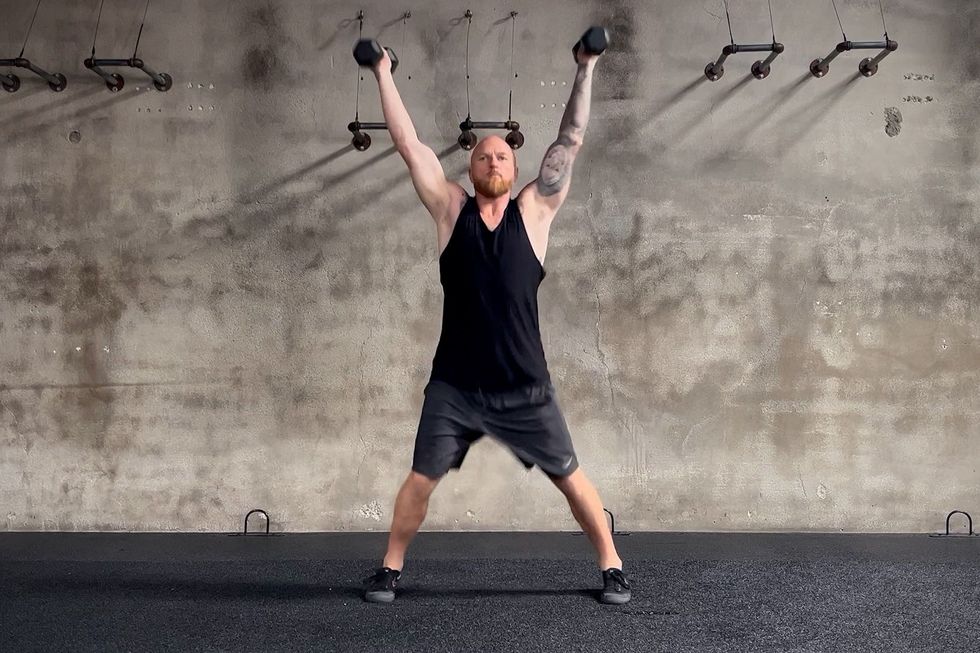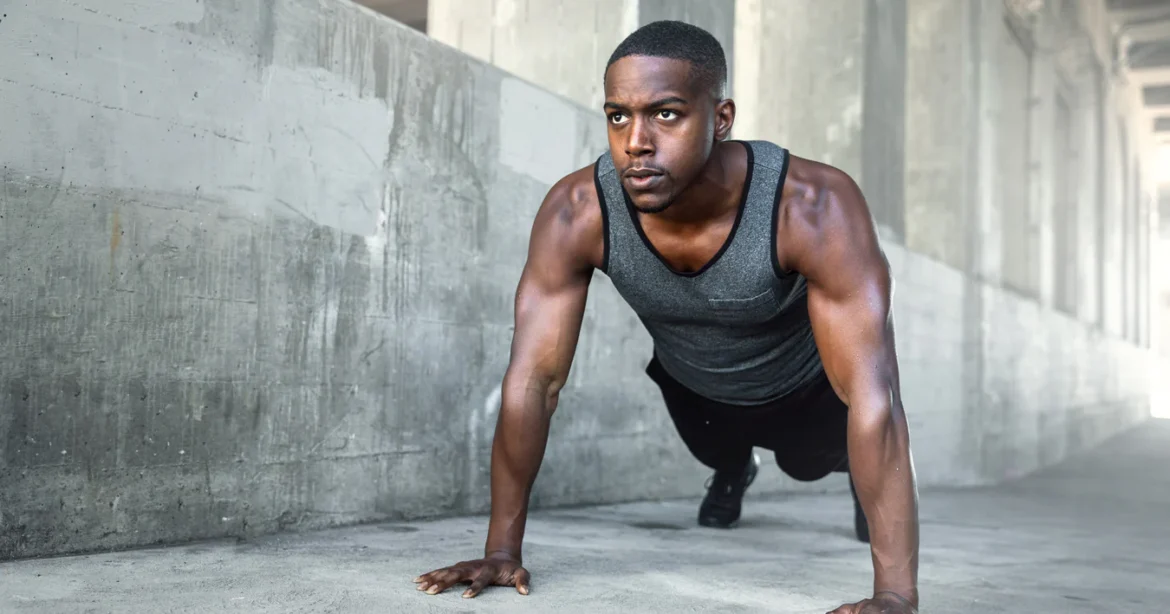Staying fit doesn’t always mean going to the gym or using complex equipment. A full body workout can be done right at home—with little space, no machines, and a little commitment. Whether you’re a beginner or someone getting back into shape, this guide offers ten effective bodyweight exercises that target your entire body. No need to overthink it. Just you, your body, and a clear plan.
Why a Full Body Workout Matters
Your body is designed to move as a whole, not in isolated parts. A full body workout ensures you’re training your upper body, core, and lower body evenly. This balance helps improve posture, strengthens stabilizing muscles, and supports joint health. Plus, it increases your metabolism, burns more calories, and saves time.
Many people train specific areas—like arms or abs—but they miss the bigger picture. A full body workout builds real-world strength that helps in everyday life: lifting groceries, climbing stairs, or running after your kids. It also reduces the risk of injury by improving muscular coordination across your entire body.
Getting Started at Home
The beauty of a full body workout at home is its simplicity. You don’t need a home gym setup. Just find a small open space—living room, bedroom, even a backyard—and a comfortable mat. Warm up your muscles before starting to increase circulation and prevent injury. A few minutes of arm circles, jumping jacks, or walking in place is all it takes to get ready.
As you go through each exercise, listen to your body. Don’t rush. Good form is far more important than speed or intensity, especially for beginners. Start with one round of the routine, then add more as you get stronger. You’re not competing with anyone. This is your journey.
10 Simple Full Body Exercises
These ten exercises are thoughtfully chosen to target your major muscle groups without equipment. You can combine them into one circuit or sprinkle them throughout your day.
Bodyweight Squats
Squats strengthen your glutes, thighs, calves, and core. Stand with your feet shoulder-width apart. Lower down as if sitting in a chair, keeping your chest up and knees in line with your toes. Rise back up. Repeat for 12–15 reps. This simple move builds lower-body strength and boosts flexibility.
Push-Ups
Push-ups engage your chest, shoulders, arms, and core. Start in a plank position with your hands slightly wider than shoulder-width. Lower your chest toward the floor, then push back up. Modify by dropping to your knees if needed. Aim for 10–12 reps to start. Push-ups are a classic for a reason—they work.
Glute Bridges
Lie on your back with knees bent and feet flat. Lift your hips until your body forms a straight line from shoulders to knees. Squeeze your glutes at the top, then lower. Do 12–15 reps. Glute bridges not only strengthen your backside but also relieve lower back tightness.
Plank Hold
A solid core isn’t just about abs—it’s about stability. Start in a forearm plank, elbows under shoulders. Keep your body in a straight line and hold for 20–30 seconds. As you build strength, aim for 60 seconds or longer. Planks improve posture and help protect your spine.
Lunges
Lunges are excellent for legs and balance. Step forward with one leg and lower until both knees are at 90 degrees. Push back to start and repeat on the other side. Do 8–10 reps per leg. Lunges mimic everyday movements, making them great for functional strength.
Superman Raises
Lie face-down with arms extended. Lift your arms, chest, and legs off the ground at once. Hold briefly, then lower. Do 10–12 reps. This exercise strengthens your back, glutes, and shoulders, counteracting the effects of sitting too long.
Mountain Climbers
From a plank position, drive one knee toward your chest, then switch legs rapidly. Continue in a steady rhythm for 30 seconds. Mountain climbers elevate your heart rate, strengthen the core, and boost endurance.
Tricep Dips (Using a Chair)
Sit on the edge of a sturdy chair, hands gripping the edge. Move your hips off the seat and bend your elbows to lower your body, then push back up. Do 10–12 reps. This targets the back of your arms and shoulders effectively.
Bird-Dog
Begin on hands and knees. Extend your right arm and left leg simultaneously, hold briefly, then return. Alternate sides. Do 8–10 reps per side. Bird-dog is a gentle yet effective exercise that improves balance, coordination, and spinal stability.
Jumping Jacks or High Knees
These cardio-focused moves get your blood pumping. Choose jumping jacks for a full-body warm-up or high knees for a more intense burst. Do for 30–45 seconds. They boost stamina and wrap up your full body workout with energy.

A Simple Workout Plan to Follow
You can build a quick 20-minute routine using the exercises above. Here’s a sample plan:
- 1 round =
10 squats
10 push-ups
15-second plank
10 lunges per leg
10 glute bridges
30 seconds mountain climbers
10 superman raises
10 tricep dips
10 bird-dogs
30 seconds high knees
Rest 30–45 seconds between exercises. Repeat 2–3 rounds as your fitness improves. You’ll train every major muscle group, improve endurance, and burn calories—all in the comfort of your own home.
Cool Down and Recovery
Don’t skip your cool down. Spend 3–5 minutes stretching the muscles you worked. Include moves like standing forward fold, child’s pose, seated hamstring stretch, and gentle spinal twists. Stretching supports muscle recovery and prevents stiffness.
Drink water, nourish your body, and give yourself rest. A full body workout can be taxing if done right—so let your muscles recover properly. That’s when growth happens.
Stay Consistent, Stay Human
A good workout doesn’t have to be fancy. It just has to be consistent. These exercises may look simple, but their benefits are real. The more often you move, the better you’ll feel. Start small, track your progress, and don’t compare your journey with others.
The most important thing is showing up for yourself. Whether you’re doing 5 minutes or 25, your effort adds up. Your health is worth that time.
What’s the Difference Between a Full Body Workout and a Split Workout?
Full Body Workout
A full body workout targets all major muscle groups — chest, back, legs, arms, shoulders, and core — in a single session. It’s a great option for beginners or people with limited time.
Split Workout
Split workouts, on the other hand, divide your training across the week. For example, you might train chest and triceps on Monday, back and biceps on Tuesday, and legs on Wednesday. This is often preferred by intermediate to advanced lifters focusing on hypertrophy (muscle growth).
Summary:
- Full body = all muscles in one session
- Split = focusing on specific muscles each day
How Often Should You Do a Full Body Workout Each Week?
Most experts recommend doing full body workouts 2 to 4 times per week, depending on your fitness level and goals. Here’s a quick guide:
- Beginners: 2–3 times a week (with rest days in between)
- Intermediate: 3–4 times a week (alternate intensity)
- Advanced: Can still benefit but may prefer splits for focused training
Recovery is just as important as training, so don’t skip rest days!
How Long Should a Full Body Workout Last?
A typical full body workout should last between 45 to 75 minutes. This depends on:
- Number of exercises
- Sets and reps
- Rest periods
- Your overall goal (strength, endurance, muscle gain)
If you’re short on time, even a 30-minute high-intensity session can be effective.
Is Full Body Workout Good for Weight Loss or Muscle Gain?
For Weight Loss
Yes — full body workouts burn more calories per session by engaging multiple muscle groups, making them ideal for fat loss.
For Muscle Gain
Absolutely — especially for beginners. Hitting each muscle group multiple times per week helps stimulate muscle growth effectively.
Tip: Consistency and progressive overload are key for both goals.
What Role Does Diet Play with a Full Body Workout?
Diet is 50% (if not more) of your fitness journey. Here’s why:
- For Weight Loss: You need a caloric deficit (burning more calories than you consume)
- For Muscle Gain: You need a caloric surplus and enough protein to support recovery and muscle growth
A good workout plan without proper nutrition will give limited results.
Quick Tips:
- Eat lean proteins (chicken, fish, tofu)
- Include healthy carbs (brown rice, oats)
- Don’t fear good fats (nuts, olive oil)
- Stay hydrated!
Is There a Risk of Injury with Full Body Workouts?
Like any workout, full body routines carry some risk if done incorrectly. Here’s how to avoid injuries:
- Warm up before every session
- Use proper form (quality over heavy weights)
- Don’t skip rest days — muscles need time to recover
- Listen to your body — pain is a signal, not a challenge
Working with a trainer or using a structured program can also reduce injury risk significantly.
FAQs
How often should I do a full body workout at home?
Aim for 2–4 times per week. Listen to your body. It’s okay to rest between sessions or alternate with light activity like walking or yoga.
Can I build muscle without equipment?
Yes. Bodyweight exercises like squats, push-ups, and lunges build strength. As you get stronger, increase reps or try harder variations to keep progressing.
What if I can’t do all 10 exercises yet?
Start with 5–6 exercises and gradually add more. Modify where needed—drop to your knees during push-ups or reduce the range of motion during lunges.
Do I need to warm up before starting?
Absolutely. Warming up increases blood flow and prepares your muscles. Try a few minutes of light cardio or dynamic stretches to get started safely.
Can beginners do this full body workout?
Yes, it’s designed to be accessible. Each exercise can be adjusted for beginners. Focus on form and build confidence with consistent practice.
